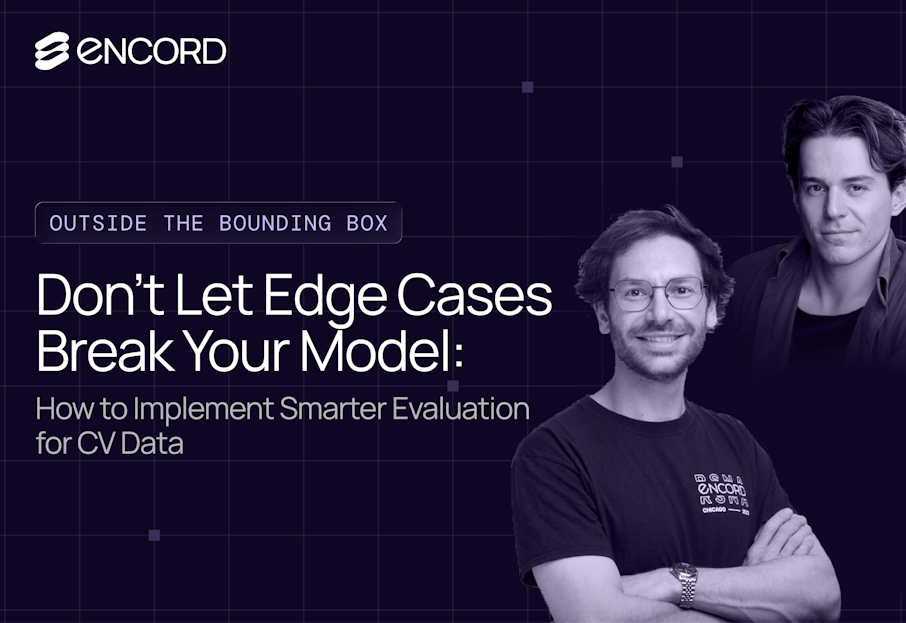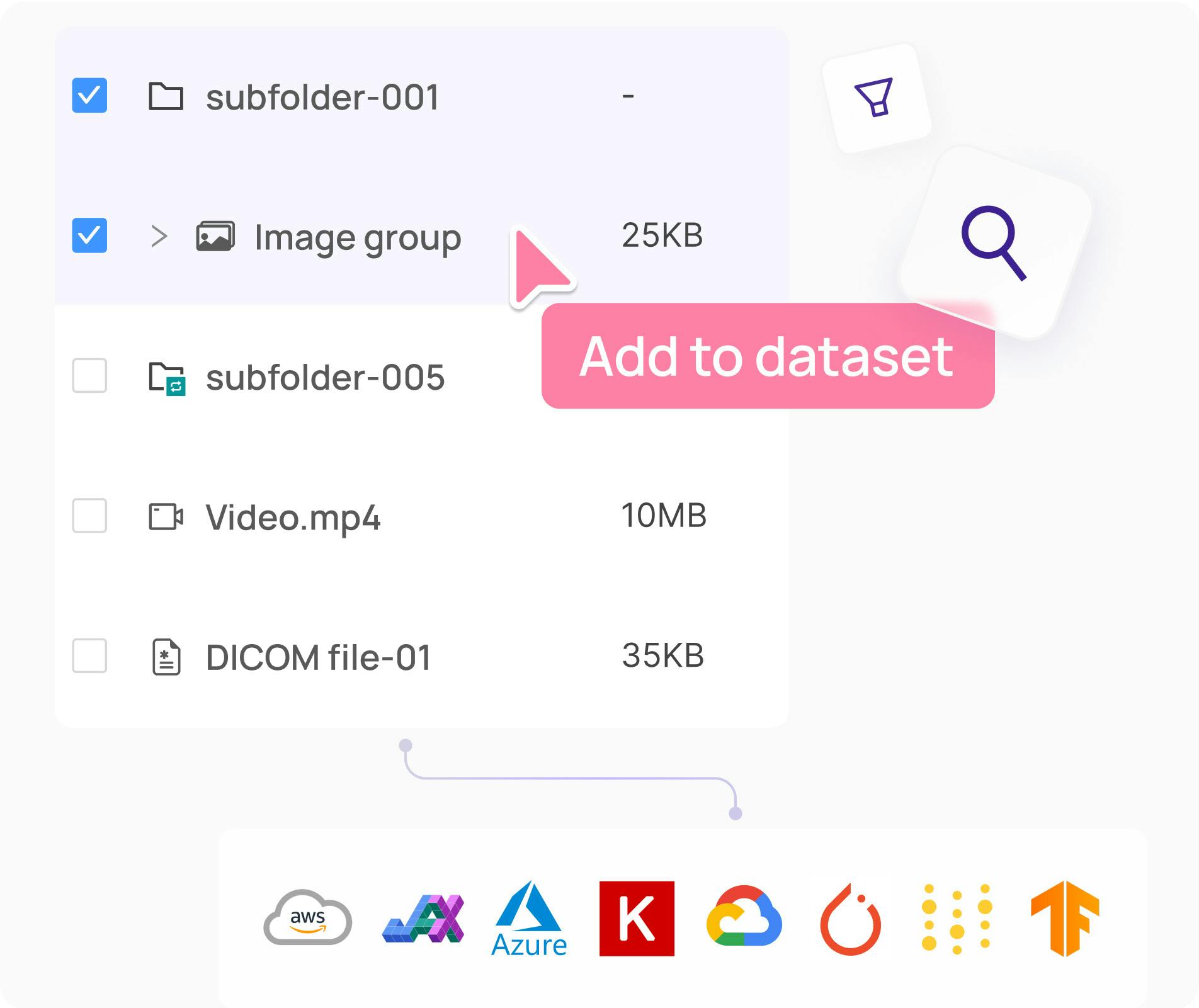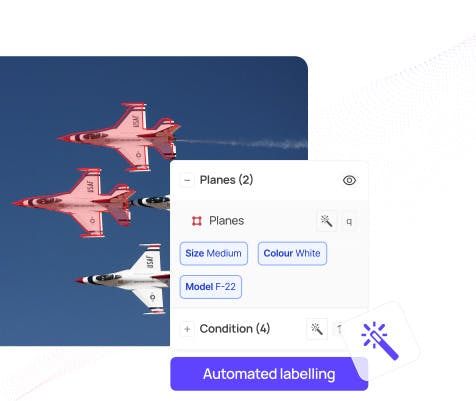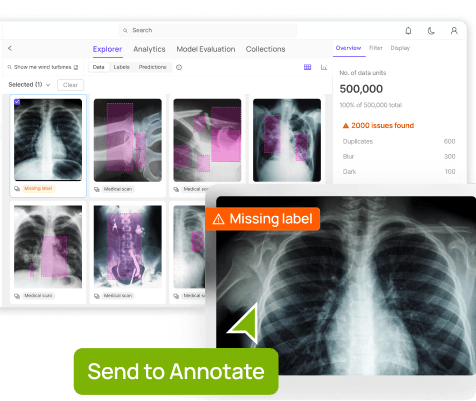Contents
Why Do Computer Vision Models Fail in Production?
What Are Edge Cases?
How to Detect Edge Cases in Your Dataset
Case Study: SwingVision
Why “Label Everything” Isn’t the Answer
Inside the Encord Platform: Curate, Annotate and Evaluate
Understanding Embeddings and Their Role in Model Evaluation
Closing the Loop: The Active Learning Cycle
Final Thoughts: Building Robust CV Models Starts with Smarter Data
Encord Blog
How to Build Smarter, More Reliable Computer Vision Models: Masterclass Recap
5 min read

Even the most accurate machine learning models can fail when they are deployed in complex, real world scenarios. False positives, false negatives, and unanticipated edge cases can hurt model performance if the model is not trained to identify them.
Our latest session of Outside the Bounding Box explored how to tackle these challenges. Leander and David walked through the reality of edge case detection and model evaluation, explaining why even high-performing models fail, and how to detect, understand, and fix these failures without labeling everything.
In case you missed it, we are providing a recap of the session, distilling it into a practical guide you can use to strengthen your own model evaluation process.
▶️ Watch the highlights here:
Why Do Computer Vision Models Fail in Production?
You’ve done everything right: curated your dataset, annotated thousands of images, trained and validated your model. But when you deploy it into production you notice that performance is not up to par.
Many teams experience this same problem. In most cases, failure comes down to one or more of four factors:
- Labeling errors – Inaccurate annotations propagate through training, leading to poor generalization.
- Poor data quality – Blurry, low-resolution, or poorly lit images degrade performance.
- Data drift – Real-world data distribution changes over time, no longer matching the training data.
- Static models – Treating deployment as the finish line instead of continuously retraining leads to model decay.
These problems often trace back to a small subset of data: edge cases.

What Are Edge Cases?
An edge case is any instance in your dataset that differs significantly from the majority of examples your model sees during training. They’re the outliers—the tricky samples that break your assumptions.
In computer vision, these might include:
- Blurry or low-light images
- Overlapping or occluded objects
- Synthetic vs. real-world domain shifts
- Unusual object orientations or scales

These small anomalies can have big consequences. For instance, an autonomous vehicle model trained mostly on clear daylight images may misinterpret objects at dusk. Or a defect detection model might miss subtle scratches if they rarely appear in training data.
How to Detect Edge Cases in Your Dataset
So how do you surface these problem areas before they impact model performance?
Here are three key strategies from the masterclass:
1. Identify Performance Drops Across Data Segments
Group your dataset by metadata such as brightness, blur level, or environment. Then track where your model’s performance dips. For example:
- Does accuracy fall in low-light images?
- Do certain camera angles produce more false positives?
2. Visualize Patterns of Failure
Use embedding plots or scatter plots to visualize where your model performs poorly. Clusters of misclassifications often indicate blind spots in your data.
3. Leverage Metric Correlation and Model Evaluation
Encord’s helps teams see which data features (like object density or label confidence) most strongly affect performance. You can spot when dense or cluttered images consistently reduce precision, indicating an edge case worth further exploration.
Case Study: SwingVision
We highlighted a customer of ours, SwingVision, an AI platform that uses computer vision to analyze tennis matches, to highlight how crucial edge cases are to improving model performance.
Initially, SwingVision’s models performed well on well-lit hard courts. But once deployed in real-world matches, performance did not keep up, such as on shadowy or clay courts.
By applying edge case detection, they identified these lighting and surface conditions as failure points, curated more diverse training samples, and significantly improved model robustness.
Why “Label Everything” Isn’t the Answer
When faced with model failures, many teams default to labeling more data. But as Leander explained, that’s not only costly, but it’s also inefficient.
Most datasets contain a large proportion of redundant samples. Annotating all of them produces diminishing returns. Instead, focus on labeling smarter, not more.
By using tools that identify high-value samples, such as those representing rare or underperforming cases, you can spend annotation budgets where they matter most. As David demonstrated, Encord allows users to isolate these subsets and send them directly for re-labeling or removal.
Inside the Encord Platform: Curate, Annotate and Evaluate
During the live demo, David showcased how Encord supports the active learning cycle: the continuous loop of labeling, training, evaluating, and improving.
Key Capabilities Demonstrated:
- Data Curation: Filter massive datasets by brightness, object type, GPS metadata, or any custom criteria. Quickly isolate relevant subsets.
- Label and Prediction Views: Compare human annotations with model predictions to visualize discrepancies.
- Embeddings View: Use 2D projections of high-dimensional embeddings to cluster similar data points and uncover outliers.
- Model Evaluation Dashboard: Track prediction evolution across model versions, view confusion matrices, and correlate metrics like label confidence, object density, and width/height ratios to performance trends.
A Practical Example
When analyzing one dataset, the team noticed poor performance correlated with high object density. Further exploration revealed the real culprit wasn’t crowded scenes but rather was poor-quality images (blurry or overexposed) mistakenly flagged as dense.
By isolating and removing these “junk” frames, retraining led to improved accuracy—even on less data. That’s the power of strategic curation.
Understanding Embeddings and Their Role in Model Evaluation
Embeddings convert complex inputs (images, text, audio) into numerical vectors that capture their underlying features.
Encord uses CLIP-based embeddings reduced to 2D for visualization, enabling users to explore data clusters intuitively.
By comparing embeddings across:
- Data embeddings (raw visual features)
- Label embeddings (human ground truths)
- Prediction embeddings (model outputs)
Closing the Loop: The Active Learning Cycle
The ultimate takeaway from the masterclass is that model improvement isn’t a one-time process—it’s a loop:
- Detect edge cases and errors
- Curate targeted subsets for labeling
- Retrain and evaluate model performance
- Iterate continuously
Each cycle improves not just the model’s accuracy, but its reliability under real-world conditions.
“Better labels lead to better models. With active learning, we can continuously improve—even on rare or edge cases.”
Final Thoughts: Building Robust CV Models Starts with Smarter Data
By finding and understanding edge cases, you can build AI systems that are more adaptable, reliable, and trustworthy in production.
Key takeaways:
- Model failures often stem from rare or mislabeled data, not model architecture
- Labeling all data is wasteful, focus on labeling high-value samples
- Embeddings, metric correlations, and model evaluation tools reveal where models struggle
- Continuous iteration using the active learning loop, is key to long-term success.
Encord’s platform brings these practices together, helping teams detect, label, and evaluate data smarter, not harder.
Explore the platform
Data infrastructure for multimodal AI
Explore product
Explore our products


